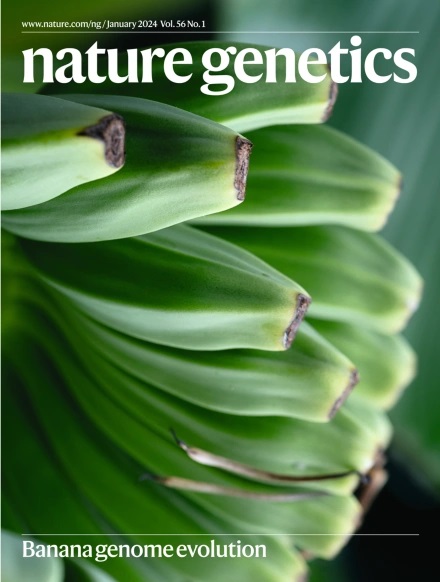狭窄性克罗恩病的单细胞和空间转录组学强调了纤维化相关网络
IF 31.7
1区 生物学
Q1 GENETICS & HEREDITY
引用次数: 0
摘要
纤维化是克罗恩病(CD)的主要并发症,其特征是细胞外基质过度沉积,导致狭窄和功能损害。由于缺乏机制表征和治疗方案,我们对来自21名CD患者和10名非炎症性肠病(IBD)患者的61个样本进行了单细胞和空间转录组学配对。肠道狭窄的特征是免疫细胞增加,包括IgG+浆细胞、CCR7-hi CD4+ T细胞和炎性成纤维细胞。空间转录组学表明,关键亚群在病变组织中共定位,并确定了Cajal和肠神经元间质细胞等其他群体。此外,我们将基因表达映射到肠道生物地理上,发现已知的遗传风险位点富集在离散的空间模块中,由炎性成纤维细胞和淋巴滤泡的存在所定义。总之,我们的数据集绘制了限制CD的关键转录组和细胞网络,并突出了多细胞遗传风险因素的空间组织。本文章由计算机程序翻译,如有差异,请以英文原文为准。


Single-cell and spatial transcriptomics of stricturing Crohn’s disease highlights a fibrosis-associated network
Fibrosis is a major complication of Crohn’s disease (CD) marked by excess deposition of extracellular matrix, leading to stricturing and functional impairment. As mechanistic characterization and therapeutic options are lacking, we paired single-cell and spatial transcriptomics in 61 samples from 21 patients with CD and 10 patients without inflammatory bowel disease (IBD). Intestinal strictures were characterized by increased immune cells, including IgG+ plasma cells, CCR7-hi CD4+ T cells and inflammatory fibroblasts. Spatial transcriptomics showed that key subsets colocalize within diseased tissues and identified additional populations such as interstitial cells of Cajal and enteric neurons. Furthermore, we mapped gene expression onto intestinal biogeography, finding that known genetic risk loci are enriched within discrete spatial modules, defined by the presence of inflammatory fibroblasts and lymphoid follicles. Altogether, our datasets chart the key transcriptomic and cellular networks in stricturing CD and highlight the spatial organization of multicellular genetic risk factors. Single-cell and spatial transcriptomics analysis of stricturing Crohn’s disease highlights cellular heterogeneity in fibrotic tissue and identifies neighborhoods of fibroblasts and immune cells contributing to this severe disease complication.
求助全文
通过发布文献求助,成功后即可免费获取论文全文。
去求助
来源期刊

Nature genetics
生物-遗传学
CiteScore
43.00
自引率
2.60%
发文量
241
审稿时长
3 months
期刊介绍:
Nature Genetics publishes the very highest quality research in genetics. It encompasses genetic and functional genomic studies on human and plant traits and on other model organisms. Current emphasis is on the genetic basis for common and complex diseases and on the functional mechanism, architecture and evolution of gene networks, studied by experimental perturbation.
Integrative genetic topics comprise, but are not limited to:
-Genes in the pathology of human disease
-Molecular analysis of simple and complex genetic traits
-Cancer genetics
-Agricultural genomics
-Developmental genetics
-Regulatory variation in gene expression
-Strategies and technologies for extracting function from genomic data
-Pharmacological genomics
-Genome evolution
 求助内容:
求助内容: 应助结果提醒方式:
应助结果提醒方式:


